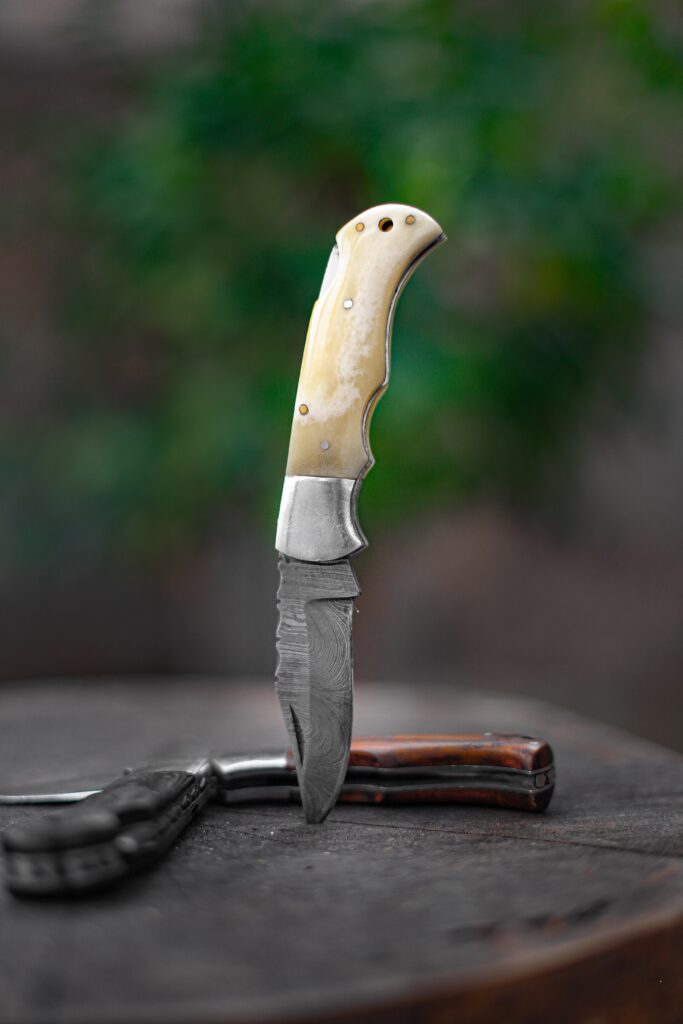A tactical hunting knife is a versatile tool that can be used for a variety of outdoor activities, including hunting, camping, and survival situations. When selecting a tactical hunting knife, there are several important factors to consider. Here’s a guide to help you make the right choice.
Blade Material
Hunting blades are an essential part of any hunting kit, and the material used in the blade can greatly impact the performance and durability of the knife. Here are some of the common blade materials used in hunting knives:
- Stainless Steel: Stainless steel is a popular material for hunting blades because it is rust-resistant, durable, and relatively easy to maintain. It is also more affordable than other materials and can come in a variety of grades, each with different levels of hardness and edge retention.
- Carbon Steel: Carbon steel is a durable and sharp material that can hold an edge well, making it a popular choice for hunting knives. However, it is prone to rust and requires more maintenance than stainless steel.
- Damascus Steel: Damascus steel is a type of steel made by layering and forging different types of steel together. This results in a unique pattern on the blade, as well as a durable and sharp edge. Damascus steel is often more expensive than other materials due to the complex manufacturing process.
- Titanium: Titanium is a lightweight and strong material that is often used in high-end hunting knives. It is resistant to corrosion and can hold an edge well, making it a durable choice for hunters.
- Ceramic: Ceramic blades are extremely sharp and durable, but they can be brittle and are prone to chipping or breaking if used improperly. Ceramic blades are often used in specialty hunting knives, such as skinning knives.
When choosing a hunting knife, it’s important to consider the intended use, as well as personal preferences and budget. The blade material should be selected based on the desired level of durability, edge retention, and maintenance required. A high-quality hunting knife with the right blade material can make a significant difference in your hunting experience.

Blade Shape
The shape of a hunting blade is another important factor to consider when selecting a hunting knife. Here are some of the common blade shapes used in hunting knives:
- Drop Point: The drop point blade is one of the most popular blade shapes for hunting knives. It features a convex curve on the spine of the blade that drops down to the point. This shape provides a strong tip for piercing, as well as a large belly for slicing and skinning.
- Clip Point: The clip point blade features a concave curve on the spine of the blade that creates a sharp point. This shape provides excellent piercing ability, but it may sacrifice some belly for slicing and skinning.
- Straight Back: The straight back blade is a versatile blade shape that is often used in hunting knives. It features a straight spine that curves down to the point, providing a long cutting edge for slicing and skinning.
- Tanto: The tanto blade is a Japanese-style blade that features a straight spine that curves sharply down to the point. This shape provides excellent piercing ability, but it may sacrifice some belly for slicing and skinning.
- Skinning: Skinning blades are designed specifically for skinning game. They feature a curved belly and a sweeping point for ease of use when removing the hide
Blade Length
The length of the blade is another important consideration. A longer blade can be used for larger tasks, such as skinning game or clearing brush, while a shorter blade is more compact and easier to carry.
Handle Material
The handle of a tactical hunting knife should provide a comfortable grip, even in wet conditions. Look for a handle made of a material such as rubber or G10, which provides a non-slip grip and is durable enough to withstand heavy use.
Blade Finish
A knife with a polished finish will be easier to maintain and will resist rust and corrosion. Look for a knife with a high-quality finish, such as a satin or bead-blasted finish.
Sheath
A good quality sheath is essential for safely carrying your tactical hunting knife. Look for a sheath that is made of a durable material, such as nylon or leather, and that provides a secure fit for your knife.
Price
Tactical hunting knives can range in price from under $50 to several hundred dollars. Keep in mind that while more expensive knives may offer higher quality materials and features, they may not be necessary for your needs.
In conclusion, when selecting a tactical hunting knife, it’s important to consider the blade material, blade shape, blade length, handle material, blade finish, sheath, and price. By considering these factors, you can find the right tactical hunting knife for your needs and be prepared for any outdoor adventure.
Top 10 hunting blades 2023
- Buck 110 Folding Hunter
- Gerber StrongArm
- Benchmade Grizzly Ridge
- ESEE Knives Izula II
- Cold Steel Master Hunter
- Spyderco Endura 4
- Havalon Piranta-Edge
- Morakniv Companion Heavy Duty
- SOG Flash II
- Kershaw Blur
It’s important to note that the best hunting blade for you will depend on your personal preferences, intended use, and budget. When selecting a hunting blade, consider the type of game you will be hunting, the environment in which you will be hunting, and the tasks you will need to perform with the knife. Look for a blade that is comfortable to hold, durable, and has the features you need for your hunting needs.
